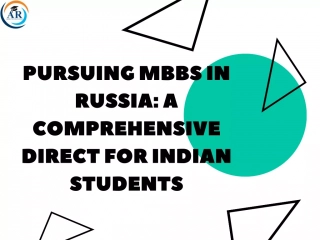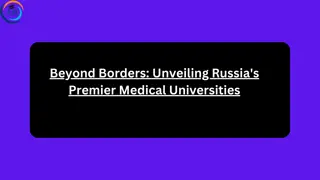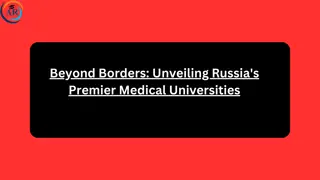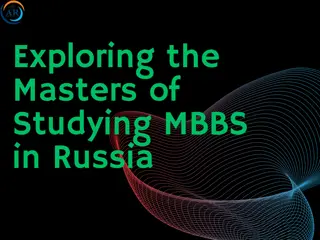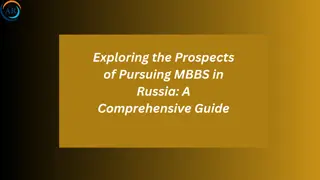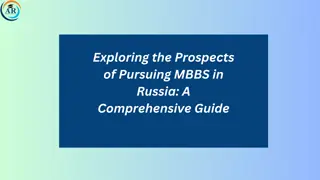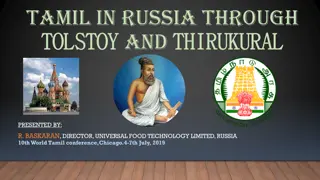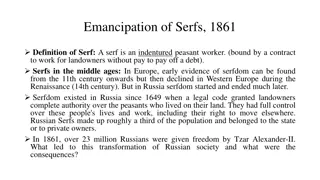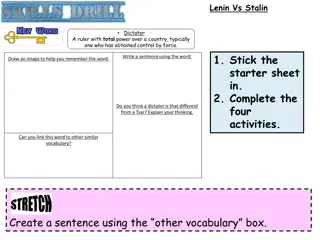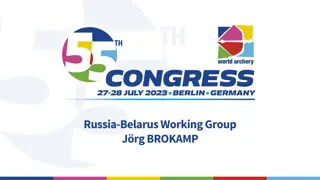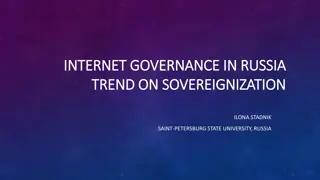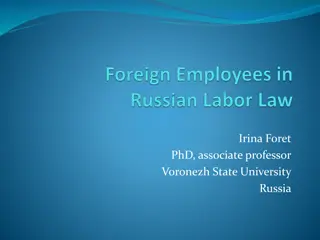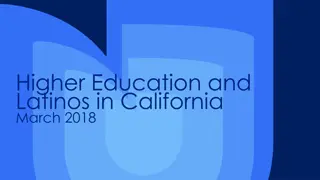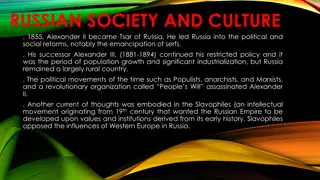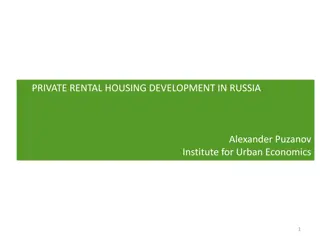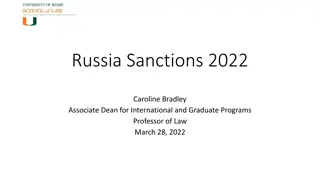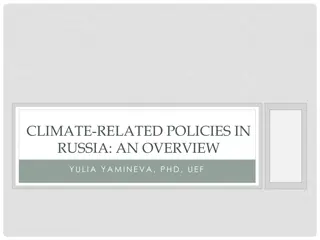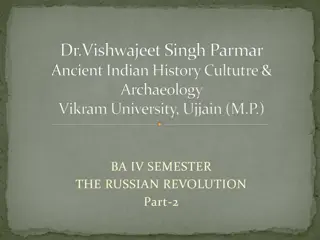Enhancing Higher Education Collaboration between EU and Russia
Explore the initiatives and challenges in aligning higher education systems between the EU and Russia, including quality, competitiveness, mobility opportunities, and economic trends. Discover the motivations for establishing joint programs, demographic influences, and the educational landscape in Russia. Gain insights into the diverse languages, educational statistics, and Russia's participation in the Bologna Process and EU-funded educational cooperation.
Download Presentation

Please find below an Image/Link to download the presentation.
The content on the website is provided AS IS for your information and personal use only. It may not be sold, licensed, or shared on other websites without obtaining consent from the author. Download presentation by click this link. If you encounter any issues during the download, it is possible that the publisher has removed the file from their server.
E N D
Presentation Transcript
Aligning higher education in the EU and Russia Tatiana Babrauskiene, member of the EESC International Secretary of LETU-FLESTU 7th JOINT SEMINAR OF THE EUROPEAN ECONOMIC & SOCIAL COMMITTEE AND THE CIVIC CHAMBER OF THE RUSSIAN FEDERATION 27 September 2017, Brussels
Educational cooperation between Russia and the EU quality transparency equality comparability competitiveness inclusiveness opportunity move freely between HE institutions, jobs, business sectors and countries resilient people social cohesion democratic values adaptable to changing labour market demands
Common challenges in HE Policy Trends: improving quality and international standing modernization and technical innovation Economic Trends: recession drives a push for a modernized economy spending on education decreased in recent years (RU 8.5 % - 2014 - 2016) Demographic Trends: declining birth rates affect the HE system
The motivations to establish a Joint Programme HEIs in the EU and in Russia REPORT EC JOINT-PROGRAMMES 2014 PRIORITIES EU HEI % PRIORITIES RU HEI % Develop connections with international partners 90 Develop connections with international partners 80 Attract more international students 70 Provide better mobility opportunities for the Russian students 75 Provide better mobility opportunities for EU students 60 Attract more international resources (knowledge, finance) 45 Attract more international re- sources (knowledge, finance) 25 Improve the image of the HEI in Russia 40 Develop better reputation in Russia Attract more international students 20 35 Develop relations with Russian employers 20 Develop better reputation in EU 30 Improve the image of the HEI in the EU Develop relations with EU employers 15 10
Some figures up to 100 languages, including 35 that are official - remain in use 85 federal subjects, including republics, oblasts (provinces), krais (districts) and cities of federal importance the largest nation in the world in terms of landmass 54 percent of 25- to 64-year-old Russians held tertiary degrees (2016) - one of the most educated in the world Member of Bologna Process since 2003 Largest non-EU participant in EU-funded international educational cooperation Russia's share in EU funding for educational cooperation with partner countries, 2017 (EC) Expenditure for Russia, 2014-2017 (EC)
Erasmus+ programme Exchanges since 2014: 4487 (41%) EU students and teachers - to Russia 6367 (59%) Russians - to EU universities RU => EU mobility dominates EU staff priority over student exchanges - in Russia staff exchanges increased by 71% (average cost of mobility: students, 5000; staff, 2000) Low student number: Excellence or sustainability? Top ten destination countries for Erasmus students and staff coming from Russia to EU (EC) Top ten countries of origin for Erasmus students and staff coming from EU to Russia (EC)
Success story Between 2014 and 2017 Russians were awarded: 2.4% of all Erasmus Joint Master's scholarships 4.0% of doctoral fellowships The success rate for Russian students applying for Master's scholarships was 6.5%, comparable to most other countries, whereas for doctoral fellowships it was an impressive 24.5% Russia is the 6th largest recipient of EU capacity-building grants. In 2015, 72 Russian universities received a total 4.1 million in grants, 3.4% of total EU funding for this purpose. 2015 - 78 projects from Russia applied for EU funding, a success rate of 58% - Russia came top out of 72 countries participating in the programme(including EU member states), both in terms of funding awarded (15% of the total) and the number of projects approved (17% of the total).
Challenges & opportunities Russian and European HEIs national legislations, institutional boundaries lack of clarity in the internationalisation strategy academic traditions resources linguistic and cultural issues political and economic climate recognition and quality assurance stakeholders involvement career support services, alumni associations or other formal mechanisms to enhance student employability limited graduate tracking great Russian distances and high travel costs differences in teaching and learning styles bureaucracy
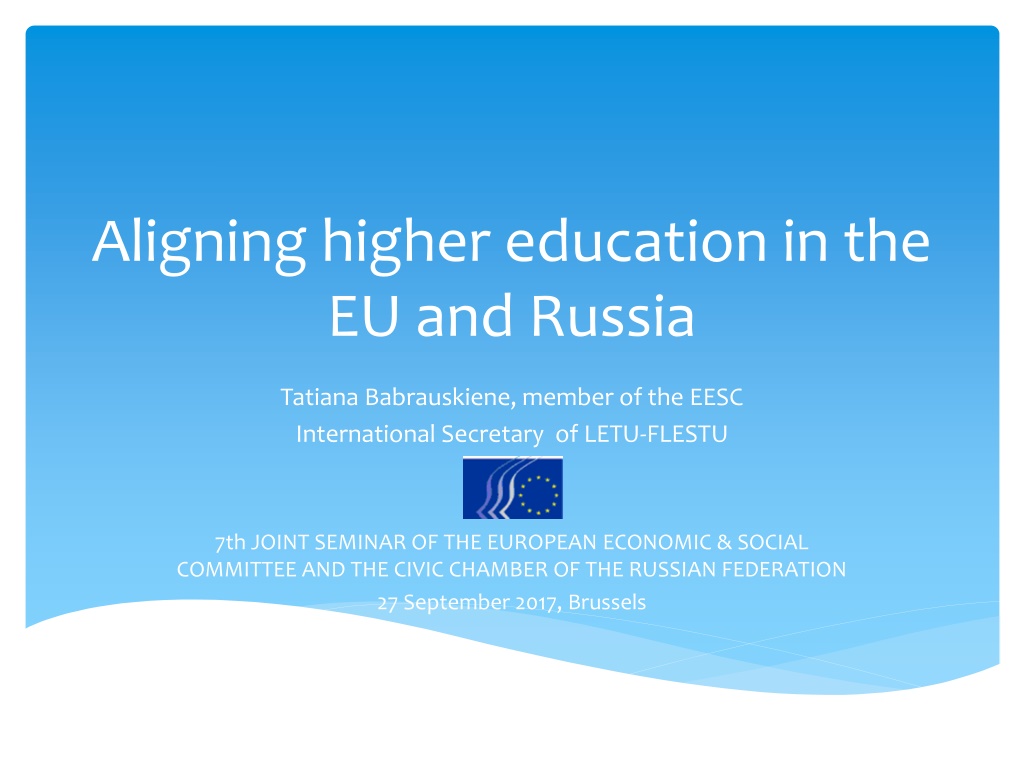
 undefined
undefined
















